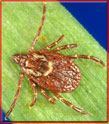Table of Contents
Overview | Tick Bite on Dog Pictures | How Ticks Bite a Dog | Pictures of Ticks that Cause Disease in Dogs
Overview:
"Ticks are blood sucking parasites, which attach themselves to animals and people. Once attached, it can feed compulsively and while they feed on blood they can transmit number of diseases as vector. Ticks themselves release toxins that can harm their hosts. The skin wound caused can lead to secondary bacterial infections and worm infestation. Severe tick infestation can lead to anemia and death.
A picture of a dog tick bite only reflects what a tick would look like at a particular point in time. The appearance of a tick will move through stages as the tick enlarges. Usually three categories in this regards are provided when engorged. A normal size tick, partially engorged and fully engorged. It can expand (engorge) many times the original size. Ticks tend to bite on more vascular areas such as the neck, head, ears, and face where the blood vessels are close to the surface.
Since the bacteria that causes Lyme disease takes 36 to 48 hours to spread after attachment, removing the tick before it enlarges indicates a very low infection risk. Most flea and tick products will not repel a tick from crawling or biting a dog. They will kill the tick once it is on the dog, but it will not transmit disease since it will kill the tick. A collar will repel ticks, but there are always cases when prevention fails.
Affected dogs may not exhibit any clinical signs. Some dogs display mild to moderate limb or joint discomfort or pain when the joints are touched. Diagnosis using a blood test can detect the presence of the lyme antibody in 3 to 5 weeks after infection. The antibody will decline in approximately 20 weeks in dogs that have been treated. Untreated dogs show high levels of the antibody for 60 weeks. The serology test is not an accurate indicator of the disease state or treatment response.
Unlike humans, once treatment begins, recovery can be quick."
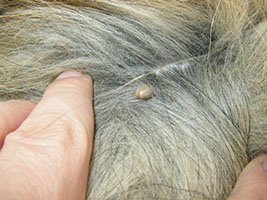 Picture of Tick on Dog
Picture of Tick on DogTick Bite on Dog Pictures
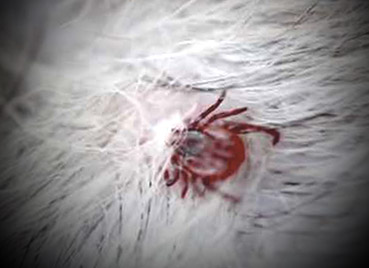
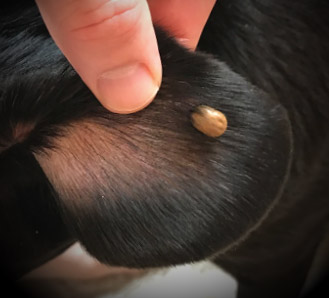
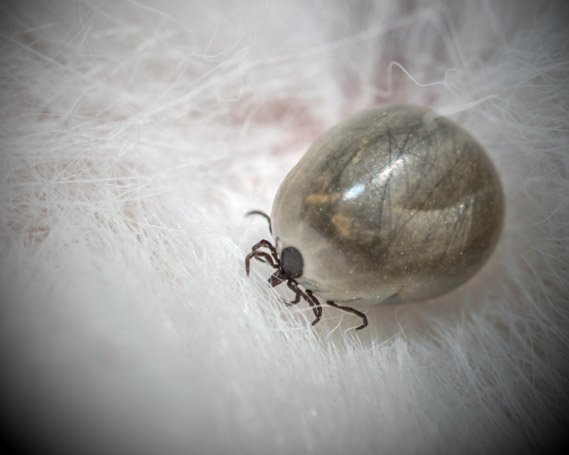
How a Tick Bites a Dog
When a tick bites a dog, it attaches its' stylus into the skin of the host.
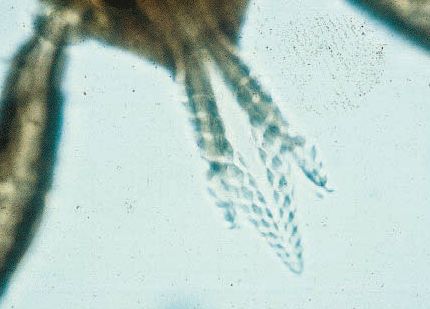
Pictures of Ticks That Cause Diseases in Dogs
Deer Tick (Black legged tick): Cause of Lyme Disease in Dogs
The deer tick is responsible for spreading lyme disease to humans and dogs. Other names for the deer tick is the black-legged deer tick or Ixodes (pronounced x-zod-ease) scapularis. The bacteria that is transmitted is called B burgdorferi. The bacteria is transferred to a dog after 36 to 48 hours of attachment. For this reason if you find a small, flat, non-engorged tick on a dog it indicates a very low risk for infection.
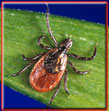
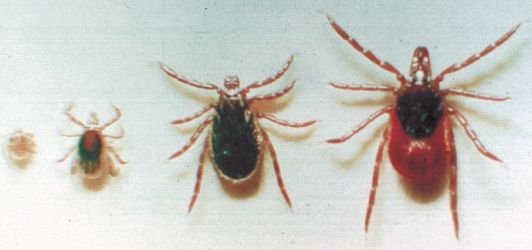
Depending on the life stage that the tick is in, the size of the tick will greatly vary. The dog tick pictures below show the various stages of the black legged tick. The larger/older the tick, the more likely it is to feed on a larger mammal such as a dog or human. Smaller ticks look for animals such as mice.
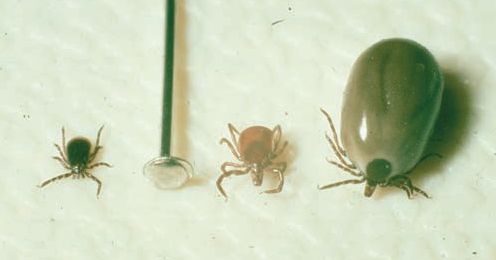
Lone Star Ticks (Amblyomma americanum)
Lone star ticks get their name from the distinctive white spot or star on their back. They are responsible for spreading diseases such as ehrlichiosis, which is a bacterial disease.
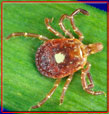
American Dog Tick (Dermacentor andersoni)
The American dog tick (Rocky Mountain Wood Tick) spreads the disease Rocky Mountain spotted fever.
